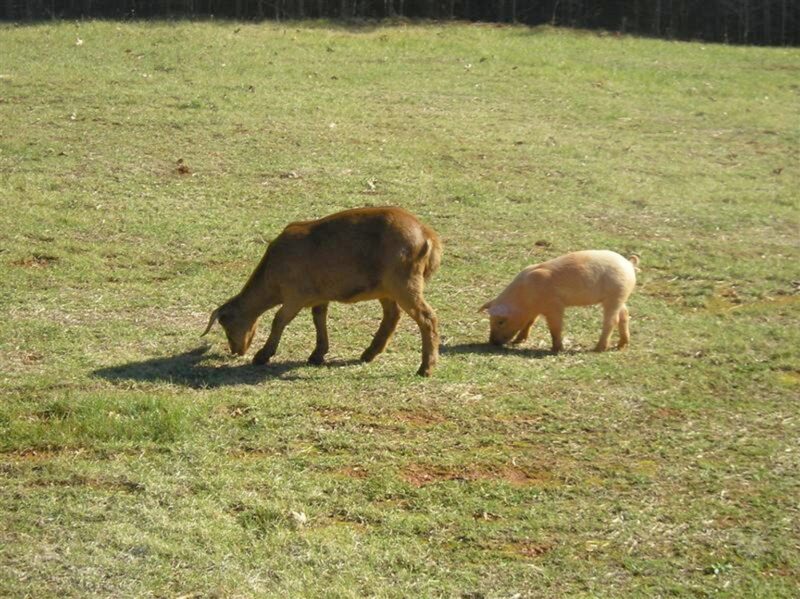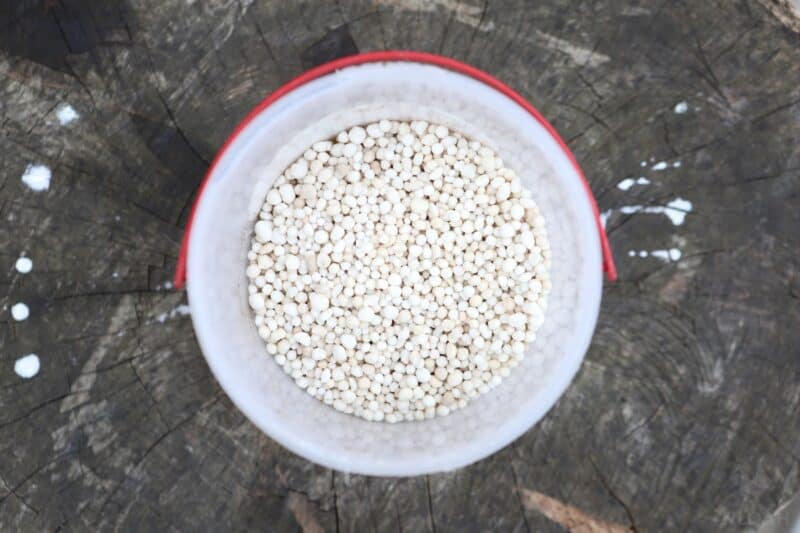No matter what kind of animals you have, be they cows, sheep, goats, or something else, if you let them graze on pasture you already know that you’ve got to take care of it, and part of getting that pasture resuscitated is fertilization.

Grasses and other plants need lots of nutrients if they’re going to grow back strong and healthy while keeping weeds and other undesirable plants at bay. But just like fertilizing any other kind of crop, timing is everything. So, when is the best time to fertilize a pasture?
The best time to fertilize a pasture is in the spring and summer, typically between April and May, though split applications may be done in the early fall.
You’ve got to precisely time the application of fertilizer not only for the health and safety of the forage but also so that the fertilizer has time to work.
The plants will still need time to grow, after all! It sounds complicated, but after you get dialed in it’s really easy and just another chore you’ll have to take care of on your homestead.
Keep reading and I’ll tell you what you need to know concerning the timing of fertilization on your pastures…
As Always, Test Before You Fertilize!
Your seasoned hands knew this was coming up, but for you new homesteaders, pay attention. The timing of your fertilization should be secondary to testing your soil, so you know exactly what your pastures need.
Only by properly sampling and testing the soil in your pasture will you know what’s required for maximum benefit. Eyeballing it, going with a gut feeling, and other lackadaisical methods are only going to result in a loss of efficiency or, worse, damage to your forage.
It’s not hard to do testing right as long as the ground isn’t frozen, and if you can’t remember the last time you tested your soil you’re way overdue already. Get those samples, send them to a lab, and then figure out what kind of fertilizer you’ll need so you’ll be ready when the time comes.
We’ve talked extensively about that in other articles, so if none of this makes sense, make sure you check them out.
Best Time for Single Nitrogen Applications
If you plan on applying your nitrogen component in a single application, this will typically be done somewhere in mid- to late April or early May.
This is done because, in the springtime, plants are starting to wake up and develop their foliage, and as you probably already know, nitrogen is critical for facilitating foliage development.
The risk factor here, especially with a single application, is that you apply too early and the nitrogen won’t do any good. Even worse, it’s possible that nitrogen can taint your soil or even cook your plants when they are in a vulnerable phase!
By waiting until spring is properly underway you can be sure that the nitrogen will do its job. But think twice, though, before you commit to a single application because a split application is significantly better for the health of your pasture. See the next section…

Timing for Split Nitrogen Applications
If you are using a split application for nitrogen fertilization (and you should be!) you’ll apply the first, smaller batch about the same time as detailed above, typically in the middle of April depending on the health of your forage overall.
The next application should be in the final three or four weeks of spring and the remainder then applied in the early fall.
This is more work for you, but a split application will be much better for your plants, especially cool-season grasses. It’s far more likely to prevent scorching and also facilitates excellent, and steady, foliage growth.
But obviously, you have to have time and opportunity to go with a split application, and if you don’t then a single application, as detailed above, is fine.
Plan to Apply Nitrogen a Few Days Before Expected Rain
One caveat for the above scheduling is that you should always attempt to apply your nitrogen component a few days before anticipated rain. You don’t want your fertilizer to sit on the soil without getting watered in, because this can damage your grasses and other plants.
Obviously, sometimes the weathermen get it wrong, but if you’re paying attention to historical trends concerning the rainy season in your region, you should be just fine even if the forecast is off by a couple of days.
Avoid Winter Applications of Nitrogen Entirely
One thing you should never do, unless you live in a tropical region, is apply nitrogen in the wintertime. When winter closes in, most plants basically go into hibernation, and that includes grasses, legumes, and others that our grazers and browsers like to munch on.
If you use nitrogen in the winter when their foliage isn’t growing and, biologically, growth is a long way away, you’ll be wasting your fertilizer at best. At worst, you’ll be harming your pasture as mentioned, if you come back around and fertilize it in early spring, you could dangerously spike soil levels of nitrogen.
Applying Phosphorus and Potassium
You have a lot more flexibility about applying phosphorus and potassium when fertilizing, and the ideal time to apply both is after the first initial grazing when you turn your animals back out. For most folks, this is around May or June.
Fertilizer Needs Time to Work Before You Resume Grazing!
Something to keep in mind is that all components of your fertilizer, nitrogen, phosphorus, and potassium, need time to work.
You want to apply and then give them several days at the least and preferably another week, maybe more, before you let your animals back out onto it. This is especially vital going into spring when plants are delicate all the way down to their roots.
Even if your animals don’t eat them right down to the ground, the trampling and cutting of their hooves can disrupt and destroy struggling plants.
Fertilize, give the plants time to grow a few inches, and then return your animals to the pasture.
If Using Multiple Pastures or Paddocks, Fertilize According to Your Rotational Schedule
One complication you must account for is if you’re using multiple pastures in a rotational schedule or subdividing a single pasture into paddocks. Timing the application of various fertilizers while ensuring that your livestock has plenty to eat and also avoid damaging any part of the pasture can be tricky.
You might find the above, hard timetables impossible to hit for each pasture or paddock. That’s okay, just do your best.
If you think of your ideal application times as early spring, mid-spring, late spring, and early fall instead of specific dates on a calendar, things should turn out just fine in the end.
Tom has lived and worked on farms and homesteads from the Carolinas to Kentucky and beyond. He is passionate about helping people prepare for tough times by embracing lifestyles of self-sufficiency.
